Food and Poverty Threshold
In the first semester of 2018, Siquijor registered on the average, a per capita threshold of Php12,454 or 16.8 percent higher than in 2017 at Php10,658. This translate that a family of five (5) to be non-poor, should need on the average a minimum income of Php10,378 or with a daily income of Php344.
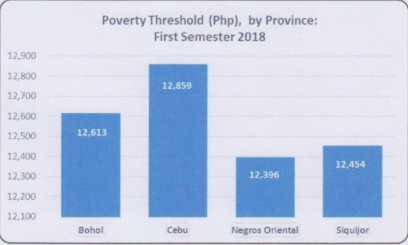
The poverty incidence or families below the poverty line was estimated at 10.0 percent in 2018 while in 2015 it was recorded at 49.9 percent (Table 1). The poverty incidence is proportion of families/individuals with per capita income less than the per capita threshold to the total number of families/individuals.
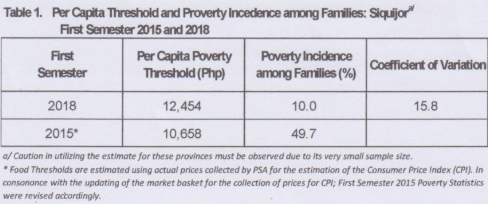
For the first semester of 2018, the poverty incidence among the individuals of Siquijor was estimated at 13.4 percent while in 2015 in the same period the poverty incidence was recorded at 51.9 percent (Table 2). This referred to as the proportion of the population living below the poverty line to the total population.
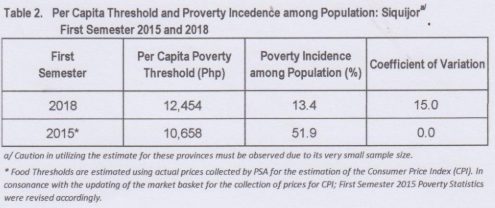
For the first semester of 2018, the subsistence incidence among Siquijor families was estimated at 3.1 percent while in 2015 it was estimated at 24.1 percent (Table 3). Subsistence incidence refers to the proportion of families or individuals with per capita income less than the per capita food threshold to the total number of families/individuals. It is equal to the proportion of the food poor.
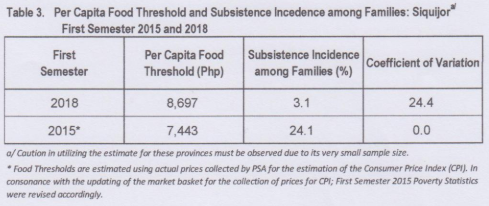
The subsistence incidence among Siquijor individuals was estimated at 4.6 percent in the first semester of 2018 and 26.0 percent in 2015 in the same period. This is referred to as the proportion of the population living below the poverty threshold to the total population.
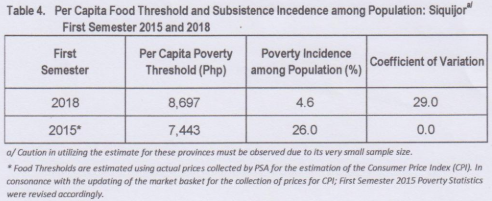
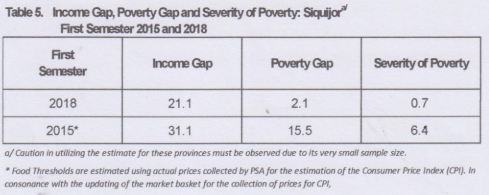
On the average for the first semester of 2018, incomes of poor families in Siquijor were short by 21.1 percent of the poverty threshold. While in 2015 in the same period the income gap was 31.1 percent.
Income gap measures the average income required by the poor in order to get out of poverty, expressed relative to the poverty threshold. The poverty gap refers to the income shortfall expressed in proportion to the poverty threshold of families with income below the poverty threshold, divided by the total number of families. While severity of poverty is the total of the squared income shortfall expressed in proportion to the poverty threshold, divided by the total number of families. This is a poverty measure that is sensitive to income distribution among the poor.

